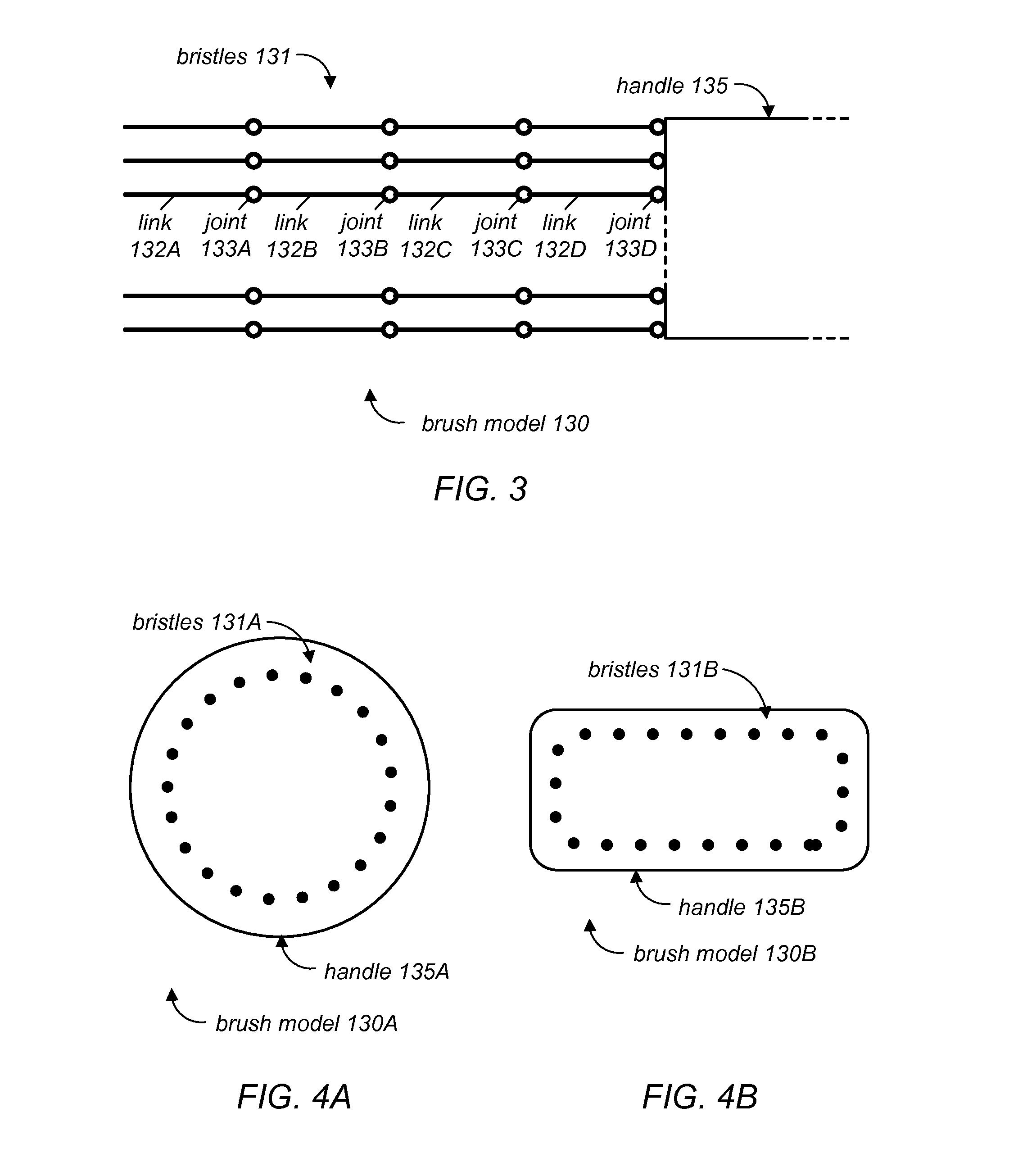Generating vector output from a physical simulation of a bristle brush
a bristle brush and simulation technology, applied in the field of computer systems, can solve the problems of limiting vector editing applications, affecting the quality of vector data, so as to maintain the editability and resolution independence of vector data
- Summary
- Abstract
- Description
- Claims
- Application Information
AI Technical Summary
Benefits of technology
Problems solved by technology
Method used
Image
Examples
Embodiment Construction
[0027]Some physical simulations of brush bristles rely on the generation of pixel data to achieve natural looking strokes and / or complex texture effects. In such systems, many overlapping transparent pixels may create nice smooth gradients around the edges of the brush stroke, and modulation with canvas grain data may create rough textured appearances within the stroke. However, these effects may all be difficult to reproduce in a vector format (such as the filled Béziers and gradients of Adobe Illustrator®) because of their complex topology and structure. For example, raster output may allow structures to be defined implicitly, whereas vector output may require that the structure be explicitly generated. The systems and methods described herein may automatically generate vector structure from a bristle brush simulation in a way that reproduces the same complex appearance of raster data's implicit structure.
[0028]Digital painting applications by and large focus on raster output—i.e....
PUM
 Login to View More
Login to View More Abstract
Description
Claims
Application Information
 Login to View More
Login to View More - R&D
- Intellectual Property
- Life Sciences
- Materials
- Tech Scout
- Unparalleled Data Quality
- Higher Quality Content
- 60% Fewer Hallucinations
Browse by: Latest US Patents, China's latest patents, Technical Efficacy Thesaurus, Application Domain, Technology Topic, Popular Technical Reports.
© 2025 PatSnap. All rights reserved.Legal|Privacy policy|Modern Slavery Act Transparency Statement|Sitemap|About US| Contact US: help@patsnap.com



